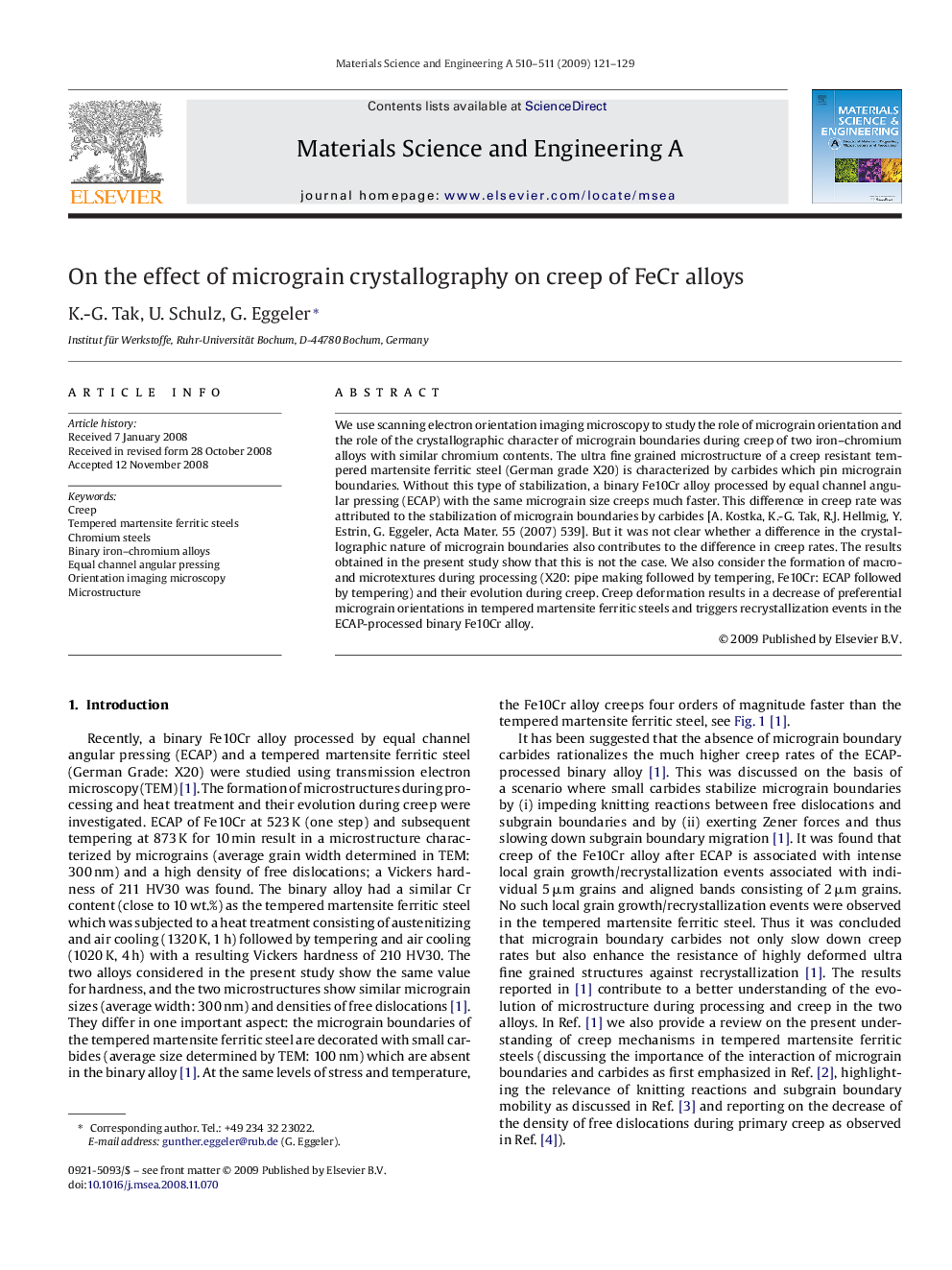| Article ID | Journal | Published Year | Pages | File Type |
|---|---|---|---|---|
| 1580745 | Materials Science and Engineering: A | 2009 | 9 Pages |
Abstract
We use scanning electron orientation imaging microscopy to study the role of micrograin orientation and the role of the crystallographic character of micrograin boundaries during creep of two iron-chromium alloys with similar chromium contents. The ultra fine grained microstructure of a creep resistant tempered martensite ferritic steel (German grade X20) is characterized by carbides which pin micrograin boundaries. Without this type of stabilization, a binary Fe10Cr alloy processed by equal channel angular pressing (ECAP) with the same micrograin size creeps much faster. This difference in creep rate was attributed to the stabilization of micrograin boundaries by carbides [A. Kostka, K.-G. Tak, R.J. Hellmig, Y. Estrin, G. Eggeler, Acta Mater. 55 (2007) 539]. But it was not clear whether a difference in the crystallographic nature of micrograin boundaries also contributes to the difference in creep rates. The results obtained in the present study show that this is not the case. We also consider the formation of macro- and microtextures during processing (X20: pipe making followed by tempering, Fe10Cr: ECAP followed by tempering) and their evolution during creep. Creep deformation results in a decrease of preferential micrograin orientations in tempered martensite ferritic steels and triggers recrystallization events in the ECAP-processed binary Fe10Cr alloy.
Keywords
Related Topics
Physical Sciences and Engineering
Materials Science
Materials Science (General)
Authors
K.-G. Tak, U. Schulz, G. Eggeler,
